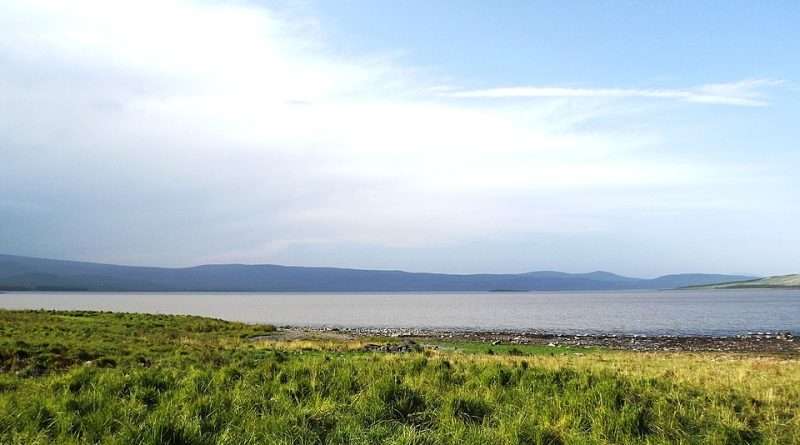Lake Arpi
Lake Arpi (Armenian: Արփի լիճ, romanized: Arp’i lich; Turkish: Arpa Göl) is a significant natural reservoir located in the Shirak Province of Armenia. Positioned on the Ashotsk plateau in the northwestern part of the country, it sits at an altitude of 2,025 meters and spans an area of 20 km^2. The lake serves as the primary source of the Akhurian River, playing a crucial role in the region’s hydrology.
Geographical Setting
Lake Arpi is situated in a high-altitude region, providing it with unique geographical characteristics. The lake and reservoir are predominantly fed by meltwater, supplemented by several springs and streams, including Karmrajur, Yeghnajur, and Elar. During winter, the lake is usually entirely covered by ice, showcasing its resilience to the region’s harsh climatic conditions.
Historical Background
The lake’s origin is attributed to a volcano-tectonic earthquake, highlighting its geological significance. From 1946 to 1950, the Arpi Dam was constructed on the Akhurian River, substantially increasing the lake’s size. The dam, made from reinforced concrete, measures 10 meters in height and 80 meters in length.
Before the dam’s construction, Lake Arpi had a surface area of 4.5 km^2, a volume of 5 million cubic meters, and a depth of 1.6 meters. The transformation into a reservoir has seen these figures grow exponentially, with the lake now holding approximately 90 million cubic meters of water.
Environmental Aspects
Flora and Fauna
Lake Arpi boasts a rich biodiversity, with over 140 species of birds observed in the vicinity, 80–85 of which are nesting species. The lake supports the world’s largest colony of Armenian gulls alongside various species of ducks, pelicans, and migrating birds. Recognized as an Important Bird Area, the site is crucial for avian conservation.
The aquatic life is equally impressive, with various species of fish inhabiting the waters. The lake’s transformation into a reservoir has led to an increase in the number of fish species. However, this has been accompanied by challenges such as poaching and unauthorized fishing methods.
Human Impact and Usage
The reservoir is vital in irrigation and hydropower production, supporting agriculture in the Shirak Plain and the Upper Akhurian basin. Water from the lake is also channelled to the Talin and Armavir canals, showcasing its significance in regional water management.
Accessibility
Lake Arpi can be accessed by road, with routes coming from Ghazanchi in the east and Amasia in the south. The lake is navigable by small boats, facilitating both local fishing activities and tourism.

